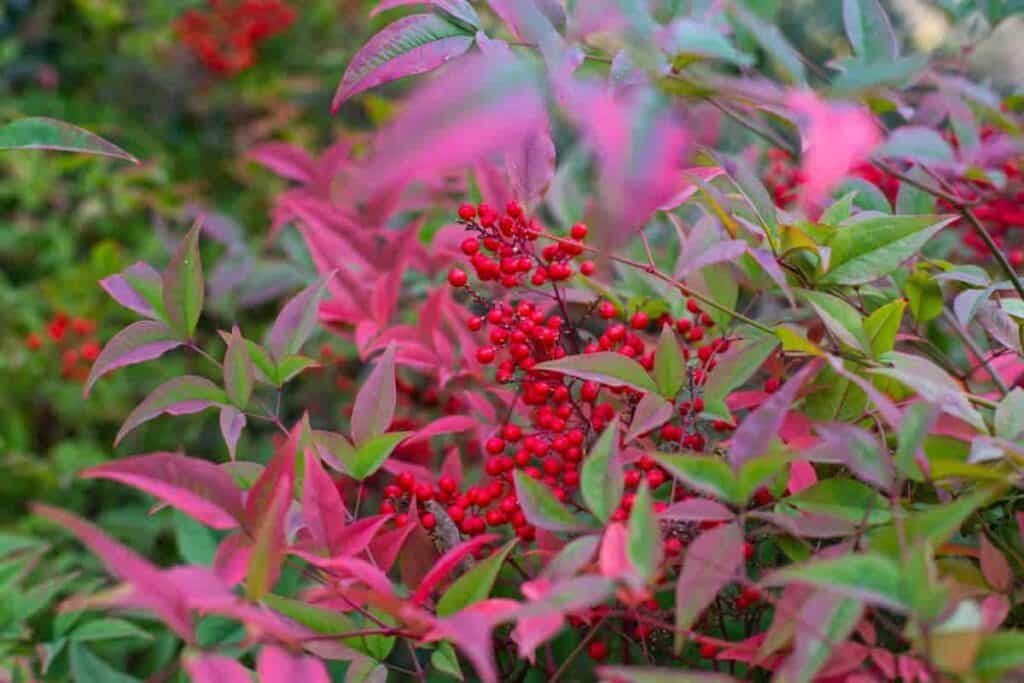October’s beauty is so brief… and if spring gardens are to be beautiful, much work must be done now. It is moving time this month or next for plants that are placed wrong. Look at the garden with a critical eye.
Are clumps of daylilies too close to walks? Do shrubs need moving? Are there enough evergreens to balance the other plantings? Try to make beautiful garden pictures that can be viewed from every window.

There are many evergreens from which we may choose. The monkey puzzle tree (Araucaria araucana) has stiff sharp-pointed leaves clothing the trunk and branches. Rather slow growing, it reaches 30 feet. The small cones are especially attractive when used in arrangements.
Pineapple guava (Feijoa Sellowiaua) is my favorite. It makes a small green-to-the-ground, round tree 18 feet tall. The oval foliage three inches long is silvery beneath. In May it is covered with cupped petal blooms, the outside mauve and inside red-purple with poufs of wine red stamens. It is stunning as a corsage, and in fall it bears delicious fruit.
Choosing Good Evergreens
Pyracanthas and hollies are both good evergreens, bedecking themselves with brilliant red berries for winter pleasure. The smaller growing heavenly bamboo (Nandina) shows bright colors on foliage as well as great hunches of red berries.
Nandinas, to be at their best, should be fed heavily with either animal manure or commercial fertilizer. Elaeagnus is an amiable shrub. It will climb if trained, or it may be trimmed into a hedge or used as a specimen plant.
Left to grow naturally, it makes a large fountain like a mound of green leaves with velvet), and silver underneath. In November when it produces myriads of small tubular cream blossoms, visitors will ask who spilled the perfume.
Every Southern garden should have at least one sweet olive (OsmaniJu fragrans) for the heavenly perfume it gives all winter when a few warm days appear.
Mexican hydrangea (Clerodendrum bungei) is root hardy, grows to six feet tall in a season, and has broad-toothed leaves with a reddish underside. It blooms all season with large heads of rosy-red blooms and will grow either in sun or deep shade. Foliage smells bad when bruised but the flower heads are fragrant.
Dahlias will be at their beautiful best this month. Let a few choice blooms dry on the plant, and harvest the seed. Plant seeds early in a flat next spring; you may have some beauties.
Niagara, Concord, and scuppernong grapes do well in the South. The grace of the grape is as lovely as any flowering vine. They may be used to cover arbors, hangover gateways, and especially on the sunny side of a building or wall.
Seeds that may be sown in the open this month are anchusa, calliopsis, candytuft, cornflower, larkspur, hollyhock, nemophila, nierembergia, poppies, Queen Anne’s lace, and phlox. Sweet peas are better planted near Thanksgiving day.
Violets may be divided and reset. I know of no more floriferous violet than the blue-gray Confederate violet. It makes an evergreen groundcover, too.
A nice garden tree that does not grow too large is the Japanese persimmon. Once it reaches bearing size it makes a sure crop. The leaves are leathery and it drops them in early fall. The large bright fruits last from September until almost Christmas and are very good for eating.
44659 by Kitty Simpson
